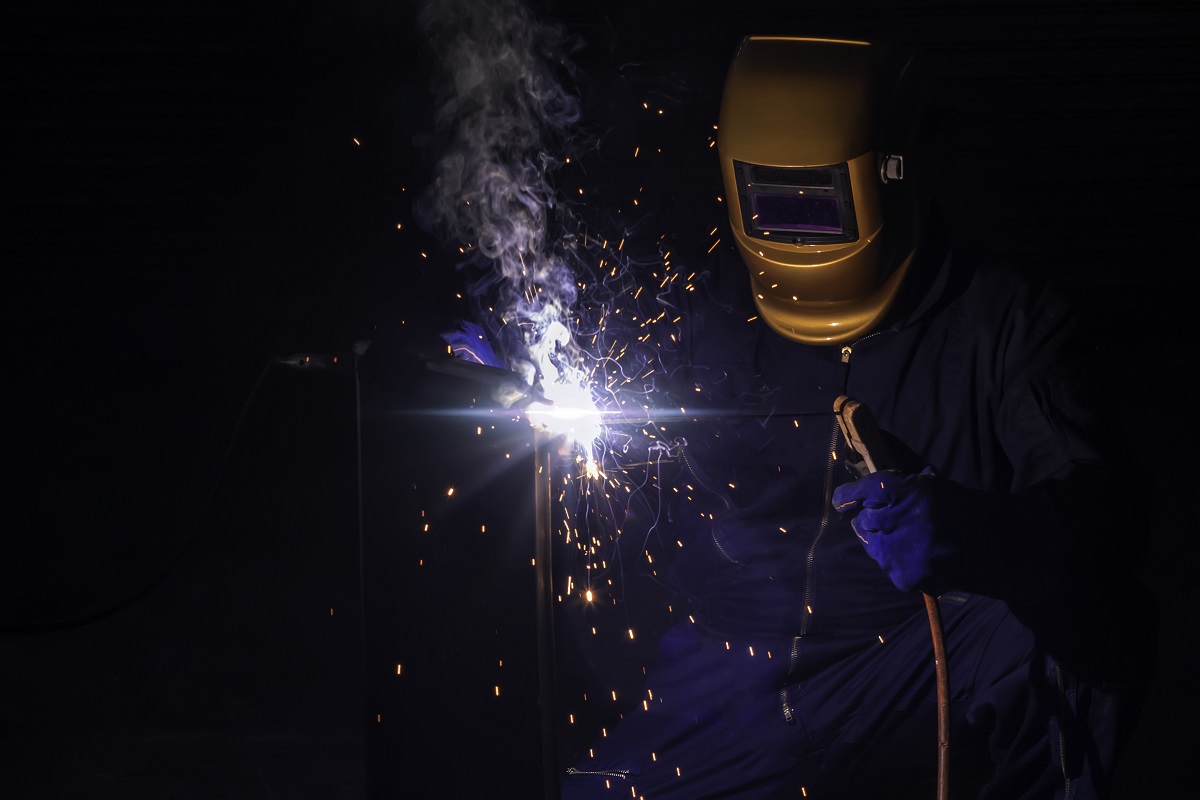What are some of the most common welding hazards?
- Fires and explosions
- Electric shock
- Toxic fumes and gases
- Noise-related hazards
One of the most important things you should remember about aluminum welding and all other types of welding is that they can pose a risk to your health and general well-being if you are not careful or wearing personal protective equipment (PPE). Despite the necessity of welding in countless industrial processes, you would do well to know what the hazards of welding are and how you can avoid them.
Fires and explosions
You probably already know that welding entails the use of high temperatures to combine different metals. However, this can also pose a danger to all the people involved because high temperatures can cause fires and explosions if the necessary safety procedures aren’t practiced.
While the welding arc may reach temperatures of 10,000 degrees Fahrenheit, the real danger lies in the intense heat near the arc and the sparks or spatters that the arc creates. These sparks can reach up to 35 feet in distance from welding space, and if there are any flammable materials within that range, fire hazards are more likely to occur.
To prevent fires and explosions from happening, inspect the work area for any flammable materials and remove them before welding. You should be wary of all the different flammable materials such as liquids like gasoline, oil, and paint. Flammable solids include wood, paper, and cardboard. There are plenty of flammable gasses, but the most common ones are acetylene, hydrogen, and propane.
Aside from keeping track of flammable materials, you should also know where the fire extinguishers are in case of emergencies and ensure that fire alarms are working properly. If no extinguishers are available, have fire hoses, sand buckets, and fire-dousing equipment at hand. Finally, have a ‘fire watcher’ observe while you work so that you have an added level of protection as you work. The fire watcher is also in charge of putting out smoldering fires if there are any left after you are done welding.
When a fire does happen, do not panic and head for the fire exits immediately. Contact the fire department as soon as possible to prevent fires from getting out of control.
Electric shock

Aside from fires and explosions, electric shocks are one of the most serious risks a welder faces. Electric shocks can lead to severe injury and even death, so this is one hazard you shouldn’t overlook. In terms of how it happens, electric shocks occur when two metal objects that have a voltage touch — effectively inserting themselves into the electrical circuit.
Bare wires are often the offenders in this regard as electrical currents will pass through open wires and the welder. The higher the voltage is and the higher the current, the graver the effects will be for the one affected. However, the most common type of electric shock is called secondary voltage shock that comes from an arc welding circuit. It produces 20 to 100 volts, but keep in mind that 50 volts are enough to harm or cause potentially life-threatening injuries to an operator.
Avoid electrical shock by wearing the proper protective equipment while welding. This includes dry rubberized gloves and shoes that are not electrically conductive. Aside from wearing equipment, make sure to avoid touching metal parts with wet hands or clothing. Insulation is key, so evaluate the work area and conditions before operating to see if there is enough insulation between you, the metals you are working with, and the ground.
Toxic fumes and gases
Toxic fumes and gases are often called ‘silent killers’ because of their gaseous nature. The resulting fumes from welding can contain potentially harmful metal oxide compounds from the metals being worked on. This is more evident when welding aluminum or stainless steel because these metal alloys coatings that react to the heat of the welding arc.
To avoid this hazard, keep your head out of the fumes and ensure that there is enough ventilation or exhaust systems in your work area to control the concentration of fumes. This also helps in preventing fumes to spread to other areas where people could be affected.
If the air in your breathing zone is visibly cloudy or if breathing is suddenly uncomfortable, leave the area immediately and check on the ventilation equipment provided if they are working properly. If they are malfunctioning report this immediately to your supervisor to ensure safe working conditions for and your other workmates. Check-in with your physician if you are noticing symptoms and adverse health effects from too much inhalation of fumes and gases produced by welding.
Noise-related hazards

Welding activities also entail exposure to loud noises for a prolonged period of time. Any loud noise above 85 decibels on average is considered harmful to the ears. Different types of welding such as flame cutting or air arc gouging can produce noise levels well above 100 decibels, which means you should pay extra attention to your ears as well if you are going to be welding for extended periods.
Regular or immediate exposure to loud noises can cause permanent noise-induced hearing loss, tinnitus or chronic ringing in the ears, vertigo, and high blood pressure. Wear the appropriate protective gear such as earplugs and maintain a relatively good distance between your head and the welding site to minimize the negative effects on your ear.
Key Takeaway
Aside from the ones mentioned above, your eyes are also particularly vulnerable to UV rays and sparks which also stresses the importance of personal protective equipment. Follow the tips above if you are going to welding aluminum, stainless steel, and any other metal alloy. This not only protects you and the people around you but it also allows you to do a better job consistently.